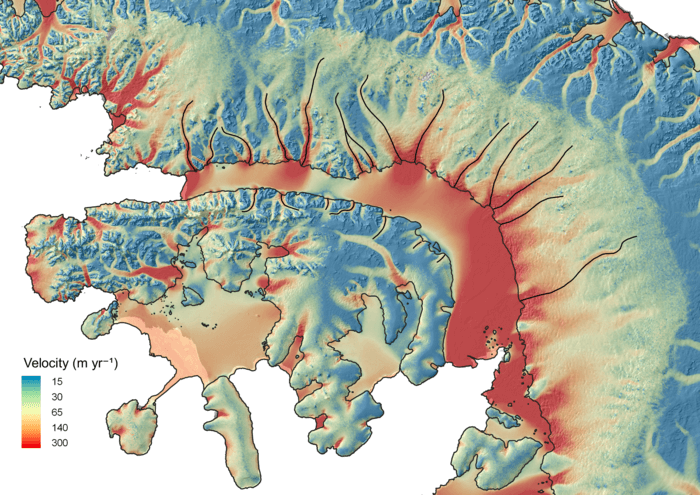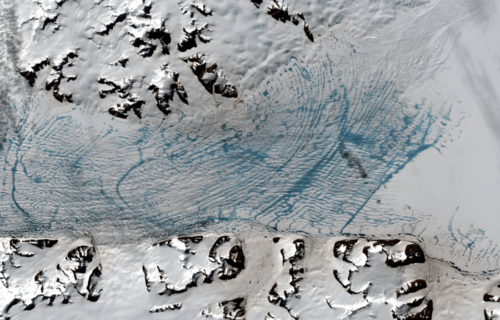CAMBRIDGE, United Kingdom — A seasonal change in movement of the huge Antarctic ice sheet has been observed for the first time.
Researchers from the University of Cambridge say rapid melting could lead to higher rises in sea levels than previously feared. Scientists detected a previously unknown source of variability draining into the George VI Ice Shelf on its peninsula, a floating platform the size of Wales.
“Observations of ice-speed change in the Antarctic Peninsula have typically been measured over successive years, so we’ve been missing a lot of the finer detail about how flow varies from month to month throughout the year,” says co-author Dr. Frazer Christie from Cambridge’s Scott Polar Research Institute (SPRI) in a university release.
An analysis of satellite radar images found glaciers feeding the ice shelf speed up by around 15 percent during the summer. The phenomenon is not uncommon in Arctic and Alpine regions. However, it was assumed large ice shelves where temperatures are below freezing were exempt from this behavior.
“Unlike the Greenland Ice Sheet, where a high quantity of data has allowed us to understand how the ice moves from season to season and year to year, we haven’t had comparable data coverage to look for such changes over Antarctica until recently,” adds first author Karla Boxall.

What’s causing this historic change?
The polar orbiting Copernicus/European Space Agency Sentinel-1 satellites collected this data. They are more effective than NASA’s Landsat 8 optical satellite.
“Optical measurements can only observe the Earth’s surface on cloud-free days during summer months,” says co-author Dr. Thomas Nagler, CEO of Austrian engineering company ENVEO. “But by using Sentinel-1 radar imagery, we were able to discover seasonal ice-flow change thanks to the ability of these satellites to monitor year-round and in all-weather conditions.”
The seasonal change could be the result of surface meltwater reaching the base of the ice and acting like a lubricant, as is the case in Arctic and Alpine areas. An alternative theory is warm ocean water is thinning the floating ice from below and allowing upstream glaciers to move faster.
“These seasonal cycles could be due to either mechanism, or a mixture of the two,” says Christie. “Detailed ocean and surface measurements will be required to understand fully why this seasonal change is occurring.”
The results imply similar seasonal variability may exist at other, more vulnerable sites in Antarctica, such as the Pine Island and Thwaites glaciers in West Antarctica.
“If true, these seasonal signatures may be uncaptured in some measurements of Antarctic ice-mass loss, with potentially important implications for global sea-level rise estimates,” adds Boxall.
Estimates have predicted that sea levels will increase by a fifth of an inch a year by the end of the century.
“It’s the first time this seasonal signal has been found on the Antarctic Ice Sheet, so the questions it raises regarding the possible presence and causes of seasonality elsewhere in Antarctica are really interesting,” concludes co-author Professor Ian Willis, also from SPRI. “We look forward to taking a closer look at, and shedding light on, these important questions.”
The study is published in the journal The Cryosphere.
South West News Service writer Mark Waghorn contributed to this report.
